Like most capital cities, Havana has a wide variety of things to see. Andrew has already written about his highlights, here are mine.
Museo Nacional de Bellas Artes
Cuba’s Fine Art Museum is spread across two buildings in Centro Havana, one dedicated to Cuban art and the other to international art. We visited the Cuban building first and I was blown away by the quality and variety of the works on display. The exhibits are arranged chronologically, the first few rooms are dedicated to colonial art with some arresting portraits, landscapes showing the countryside and life in the past with a few maps thrown in for good measure.
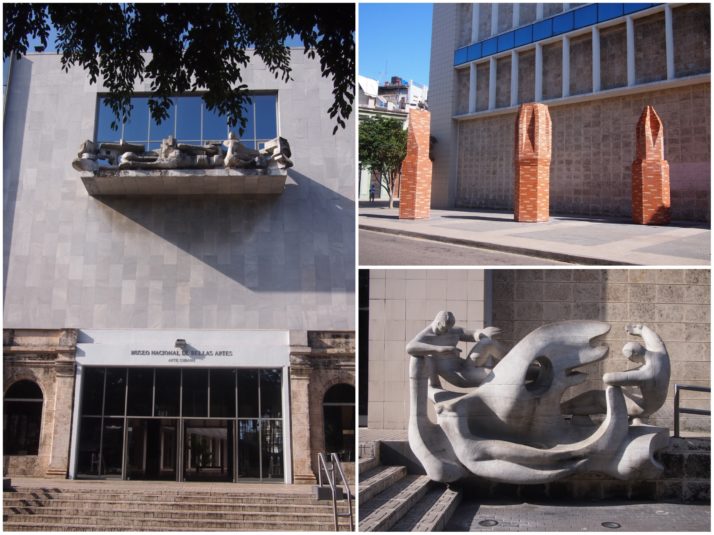 Outside the Cuban building of Havana’s Fine Art Museum, sadly no photographs allowed inside
Outside the Cuban building of Havana’s Fine Art Museum, sadly no photographs allowed inside
The rest of that floor (about three-quarters of it) shows how art progressed in Cuba from the late-19th to mid-20th century – this was my favourite part, I especially enjoyed the satirical cartoons of Rafael Blanco and Wilfredo Lam’s paintings which reminded us of Picasso. The second floor exhibits works from the mid-20th century through to the current day, also worthwhile but by that point we were starting to get museum fatigue (and hungry!) so probably didn’t enjoy them as much as we might have done.
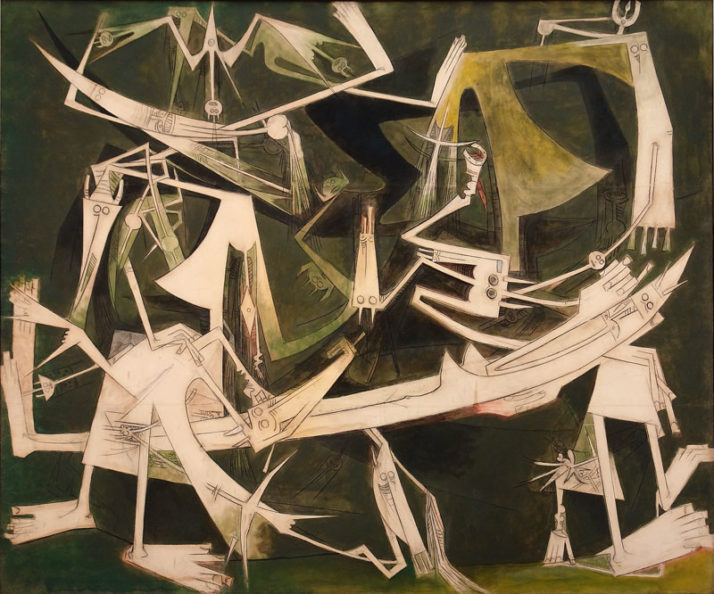 ‘El Tercer Mundo’ (The Third World) by Wilfredo Lam [photo credit: Transregional Academies]
‘El Tercer Mundo’ (The Third World) by Wilfredo Lam [photo credit: Transregional Academies]
Having refueled in a nearby cafe, we spent the afternoon in the international building and found the display of mostly pre-20th century European and Latin American art to be a bit lacklustre after the Cuban works. The stained glass ceiling in the central stairwell was spectacular although we worried about whether it would survive as it was in desperate need of renovation and the building seemed to be crumbling around it. Also in this building was a temporary exhibition by Francis Alÿs, mostly video installations covering the time he spent embedded with the British army in Afghanistan, immigration across the Straits of Gibraltar and his attempt to create a ‘bridge’ of boats stretching from Cuba to Florida.
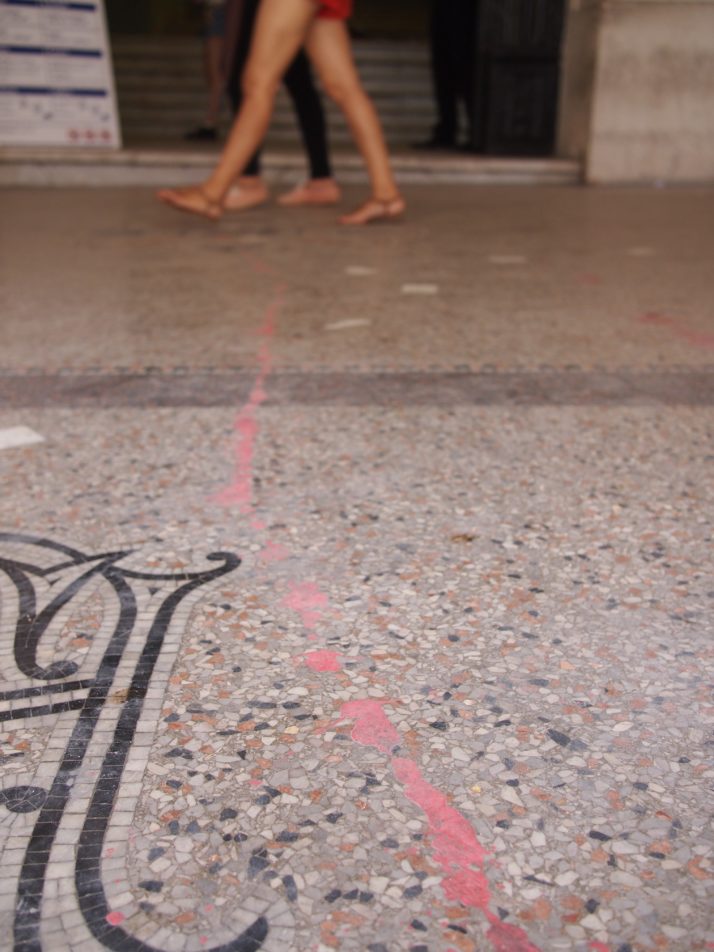 Francis Alÿs is known for creating trails of paint from art galleries out into the surrounding cities
Francis Alÿs is known for creating trails of paint from art galleries out into the surrounding cities
Fusterlandia
In search of more art, one day we made the long journey out to Jaimanitas on Havana’s western fringe to visit the home and workshop of José Fuster. Our guidebook suggested we take a taxi but we were sick of haggling prices and still feeling like we were being ripped off, so we took a chance on a local bus. We perhaps should have been a bit better prepared with landmarks around where we were supposed to get off but we managed OK and after a one hour bus journey (total cost MN4 = £0.12) and a 40 minute walk along a shady road we arrived feeling slightly smug.
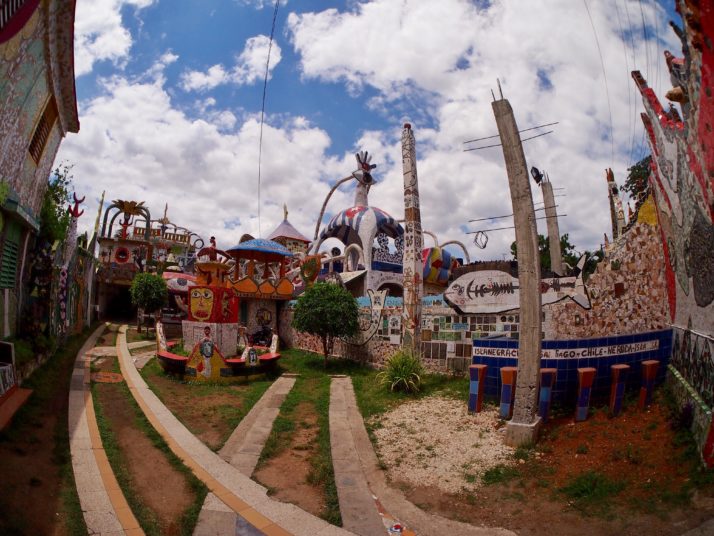 Wow! I guess we’ve arrived at Fusterlandia, José Fuster’s home and workshop
Wow! I guess we’ve arrived at Fusterlandia, José Fuster’s home and workshop
Fuster has turned not only his home but half of his neighbourhood into something reminiscent of Barcelona’s Park Güell (created by Antoni Gaudí) with lots of organic forms and bright tiles covering every surface. We loved wandering the nearby streets checking out the colourful buildings and decorated walls, there’s even a tile covered unicorn!
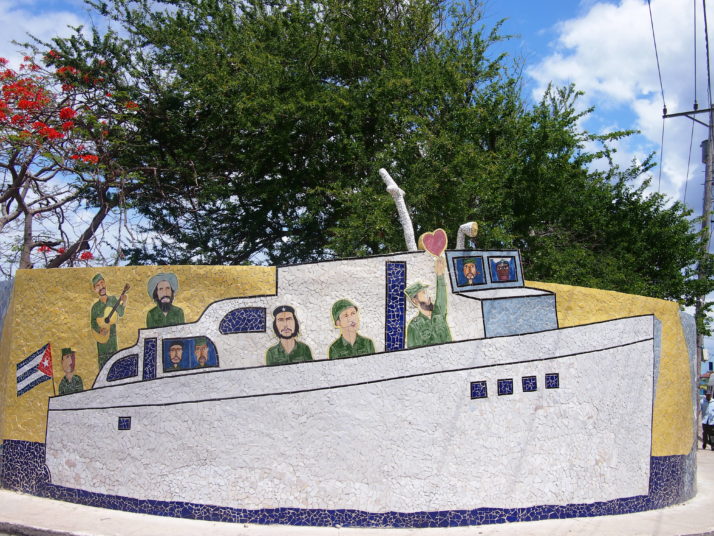 A tile mural of the Granma yacht and some of the revolutionaries who sailed in her
A tile mural of the Granma yacht and some of the revolutionaries who sailed in her
When we arrived Fusterlandia itself was closed for lunch but at 2pm we were able to go in and explore. It’s an overwhelming experience with seemingly every available surface covered in tiles, and every time we turned we spotted something new. There are lots of animals, cockerels especially appear very often, as well as hearts, a mermaid and a pavilion in honour of the Cuban Five.
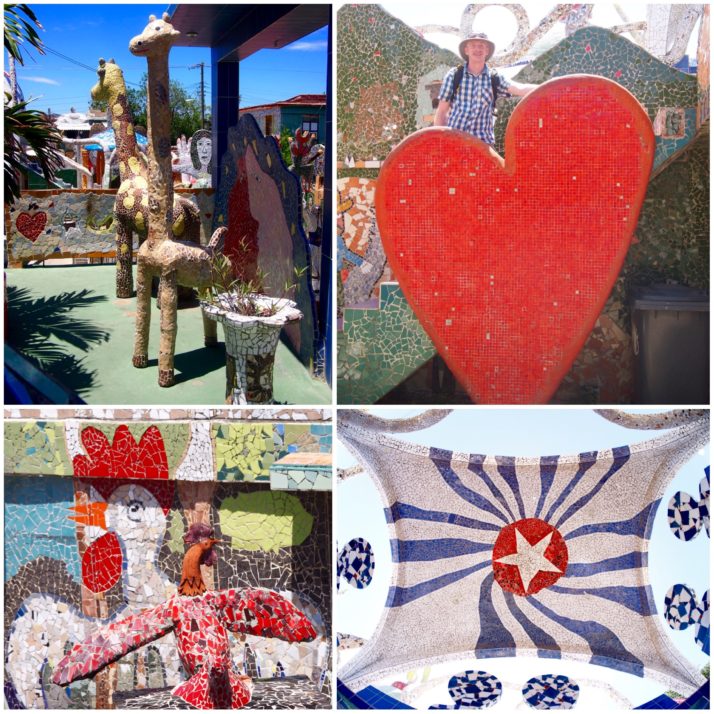 Fusterlandia details (clockwise from top left): giraffes; a heart; the Cuban Five; and cockerels
Fusterlandia details (clockwise from top left): giraffes; a heart; the Cuban Five; and cockerels
Hershey train
We love travelling by train but it turned out to not be a straightforward way to get around Cuba – the rail infrastructure is not very good and the schedules are unreliable. In fact the only train that we travelled on was the electric line from Havana to Matanzas, though we got off midway in the small town of Camilo Cienfuegos (aka Hershey). I don’t want anyone to get the wrong idea, this electric line can not be compared to Japan’s shinkansen, or even the East Coast Mainline back in the UK, it’s an old interurban train – basically a very rickety tram!
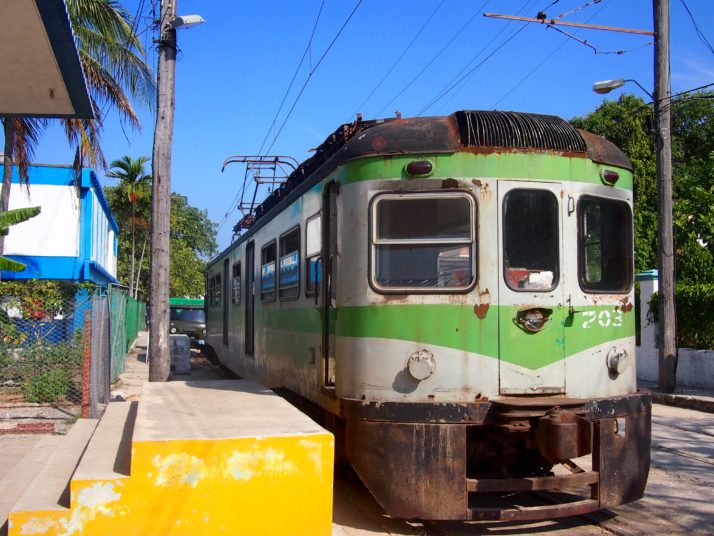 The rather dilapidated looking Hershey train at Casablanca station in Havana
The rather dilapidated looking Hershey train at Casablanca station in Havana
The line was built in 1921 by American chocolate tycoon Milton Hershey to link his sugar mill (in the town then known as Hershey) with Havana and Matanzas. Before the Revolution the sugar produced here was shipped to the US to be turned into chocolate, but in 1959 the factory was nationalised (and the town was renamed after a revolutionary hero) and it feels as if there hasn’t been much maintenance to tracks or train since then, although actually the trains were replaced with second-hand Catalonian ones in the 1990s. It’s rusty and dilapidated and bumps and clangs along stopping at dozens of little ‘stations’ (imagine a concrete bus shelter next to the line and you’ll be about right) along the way.
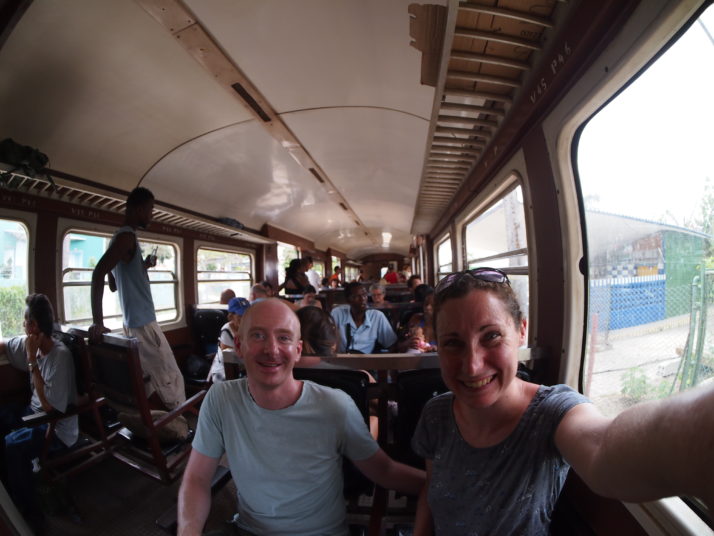 The one carriage train was pretty full leaving Havana and even more people got on at the next few stops
The one carriage train was pretty full leaving Havana and even more people got on at the next few stops
The sugar mill ceased production in 2002 and its rusting ruins dominate the sleepy town. We had a bit of a poke about and took some photos being careful not to cross the ‘Danger No Entry’ signs. While there we met an American father and son, Fred and Justin, who’d also travelled in on the train.
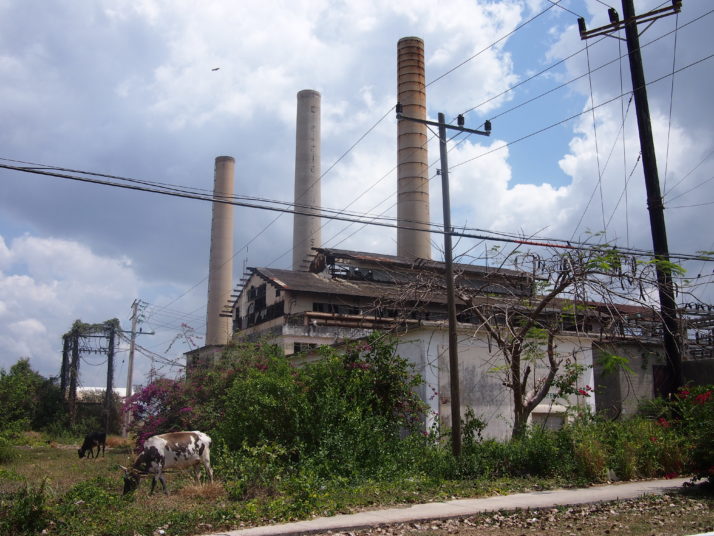 The huge sugar mill at Hershey is slowly disintegrating although its three chimneys remain intact for now
The huge sugar mill at Hershey is slowly disintegrating although its three chimneys remain intact for now
After taking photos of the mill we still had 3.5 hours to kill before the train back so we headed 1km north of town to the only other ‘attraction’ in the area, the Hershey Gardens, basically a rather overgrown pleasure ground with some woods, a pool for bathing and a couple of restaurants. We ate lunch with Fred and Justin swapping traveller’s tales over papaya juice while we waited for the food, before setting out to investigate the rest of the gardens only to discover that there wasn’t much to explore. The path wound along the river a little way to the pool where several local families were picnicking and cooling off in the water before coming to an end at a fence just a couple of hundred metres into the wood!
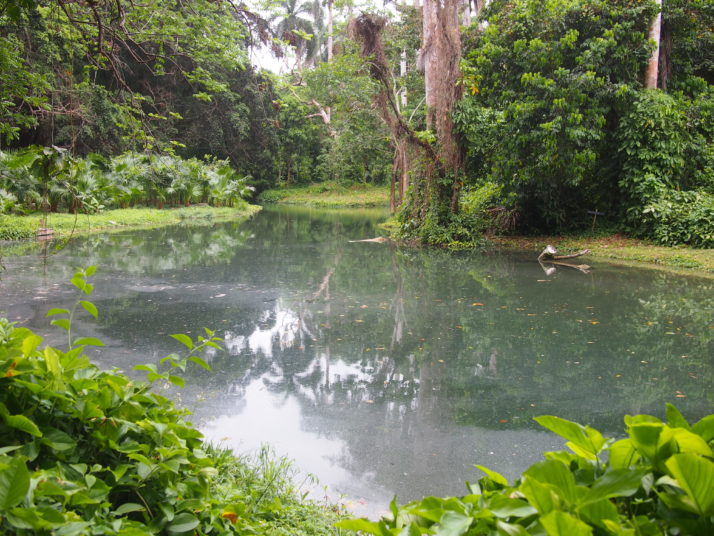 A peaceful section of the river in the Hershey Gardens
A peaceful section of the river in the Hershey Gardens
Callejon de Hamel
Tucked away off a quiet back street in Centro Havana is the Callejon de Hamel, an alleyway covered in artworks and host, at 12pm every Sunday, to a live rumba session. We thought it might be a show for tourists but there were at least as many locals there and the first band of musicians and dancers performed for an hour and a half! The drumbeat throbbed and everyone was clearly having a great time. Absolutely superb!
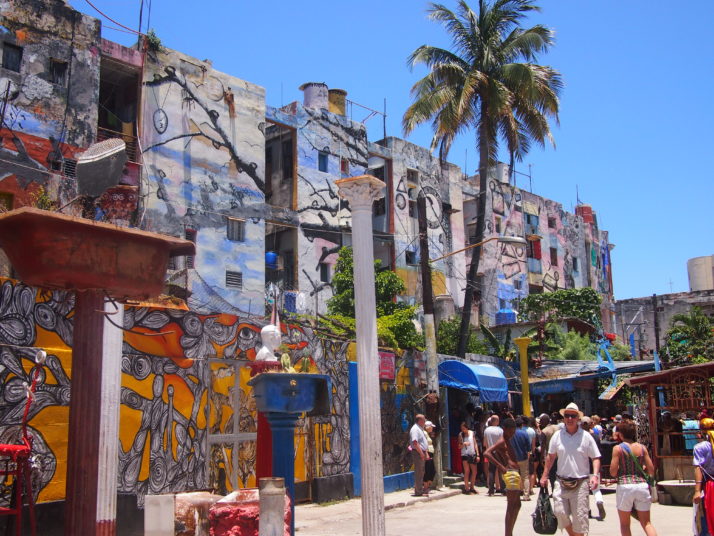 Artworks cover the surrounding buildings along the Callejon de Hamel
Artworks cover the surrounding buildings along the Callejon de Hamel
Cigar factory tour
Think of Cuba and one of the first things that’ll spring to mind is cigars, from the iconic images of Fidel Castro with a cigar clamped between his teeth to the roll call of famous brand names – Cohiba, Montecristo, Romeo and Juliet – and so we were keen to visit the Partagas factory in Havana to see how they were made (spoiler: they’re not rolled along the inner thigh of a nubile young woman…)
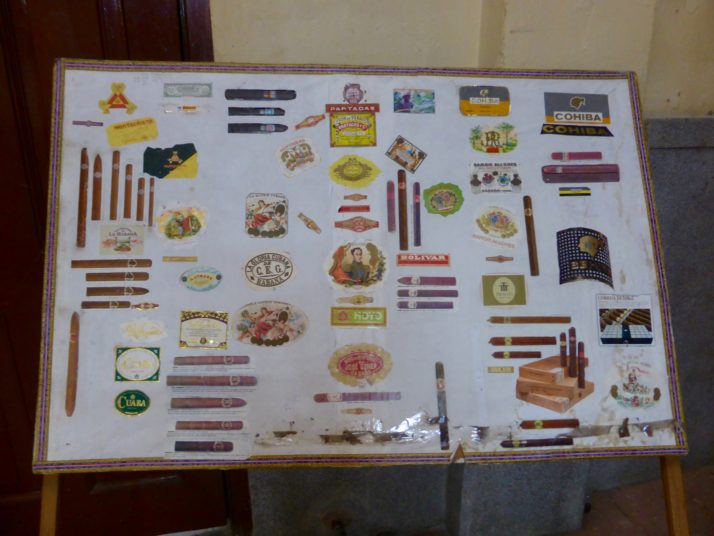 Many of the famous cigar brands are made at the Partagas factory in Havana
Many of the famous cigar brands are made at the Partagas factory in Havana
We thought the tour was a bit overpriced at CUC$10 (£7) each for a 30 minute visit and we were very disappointed that we weren’t able to take photographs of the factory floor, nevertheless our guide Marisela was very knowledgeable and we had a small group so it was easy to get a good look at what was going on and ask questions. First she explained how tobacco plants are grown, and the different types of leaf which are needed to make each cigar (for flavour, strength and burn quality) as well as leaves from shade grown plants which are more flexible, almost stretchy, and used for the binder and wrapper.
 The interior atrium of the Partagas factory
The interior atrium of the Partagas factory
Next we were taken up to the third floor where we could see the cigars being made. The workers were a mix of men and women across a wide age range and seemed friendly, smiling and winking at us as we peered in from the doorways and Marisela dashed back and forth bringing us samples to look at and smell. It is a highly skilled job and each worker must pass a 9 month training program before they can begin producing sale quality cigars (the practice duds are sent off to a different factory to be chopped up and made into cigarettes). We were interested to hear that salaries are paid in national pesos with a bonus in CUC (dependent on their output) plus 5 cigars per day.
It was fascinating to see how the cigars are rolled and pressed in forms before being bound and wrapped. Different workers each producing just one grade, length and thickness of cigar. I suspect its one of those things that looks very easy when performed by a skilled worker but is extremely difficult to get right, especially as the tightness of the roll is crucial to the finished cigar – quality control have a special machine, developed in Cuba, which measures the airflow through a sample of the production to make sure they will burn well.
Napoleon museum
Havana seems a rather unlikely place for a museum of artefacts relating to Napoleon, but here we are, one of the best laid out museums that we visited in Cuba. The displays include everything from soldier’s uniforms to period furniture to Napoleon’s pocket watch and were amassed by Cuban sugar baron Julio Lobo. Following the Revolution they were seized by the state and set out in a beautiful restored mansion near the university in Vedado.
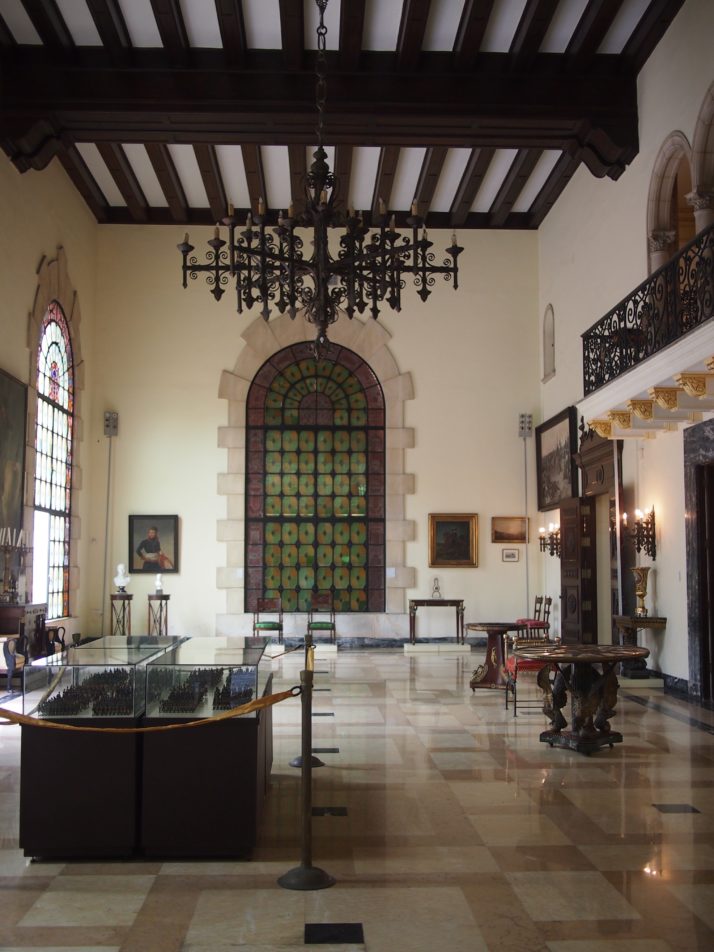 The stunning main hall of the Napoleon Museum
The stunning main hall of the Napoleon Museum
The museum was fairly quiet and a good way to spend an hour or so – I don’t think it’s on the itinerary of the bus tours – and the staff were friendly. The lovely lady on the second floor in particular spent a lot of time pointing out the various highlights set up in the bedroom and explaining to us the history of the museum collection.
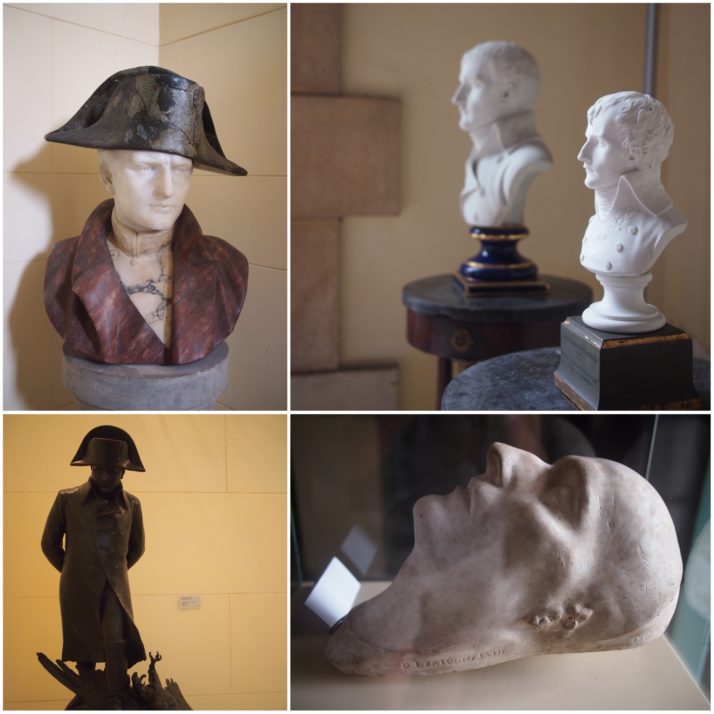 More busts and statues of Napoleon than you ever wanted to see, including his death mask in the bottom right
More busts and statues of Napoleon than you ever wanted to see, including his death mask in the bottom right
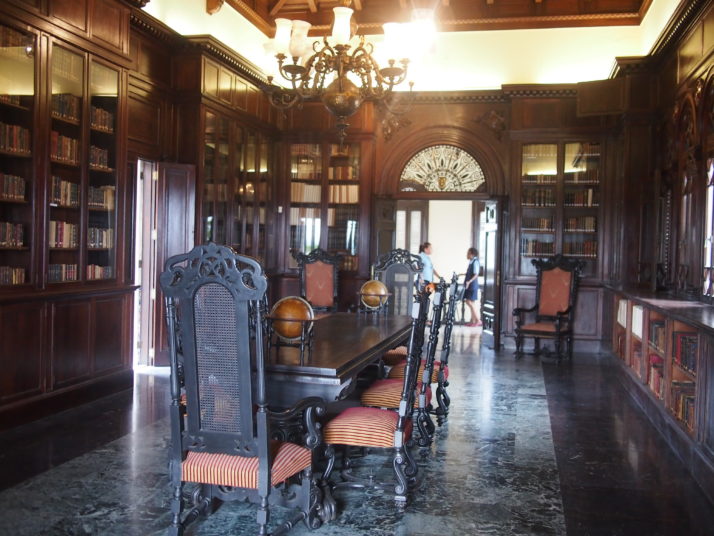 The top floor includes this magnificent library and a roof terrace with views over the city
The top floor includes this magnificent library and a roof terrace with views over the city

 two year trip
two year trip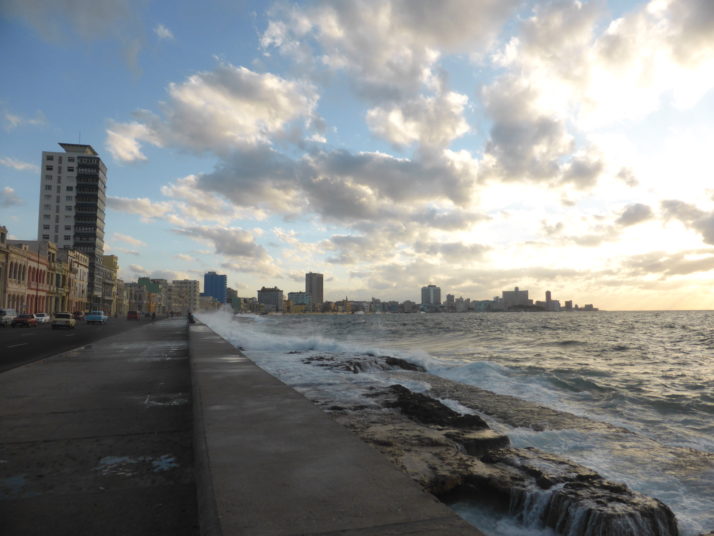
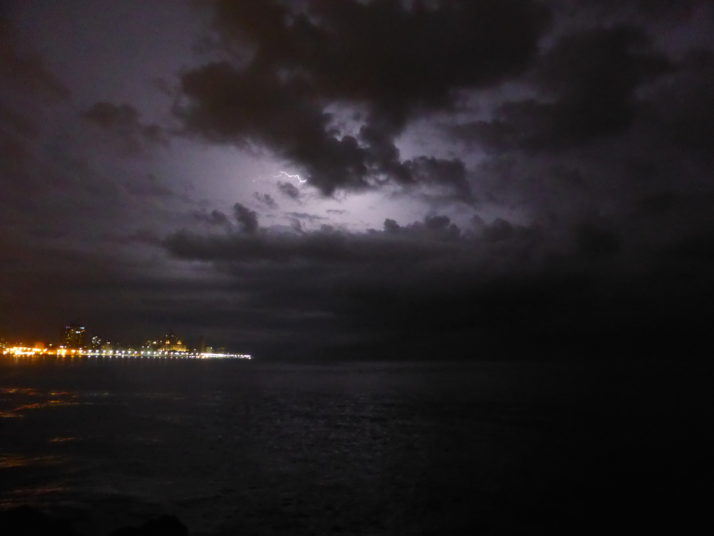

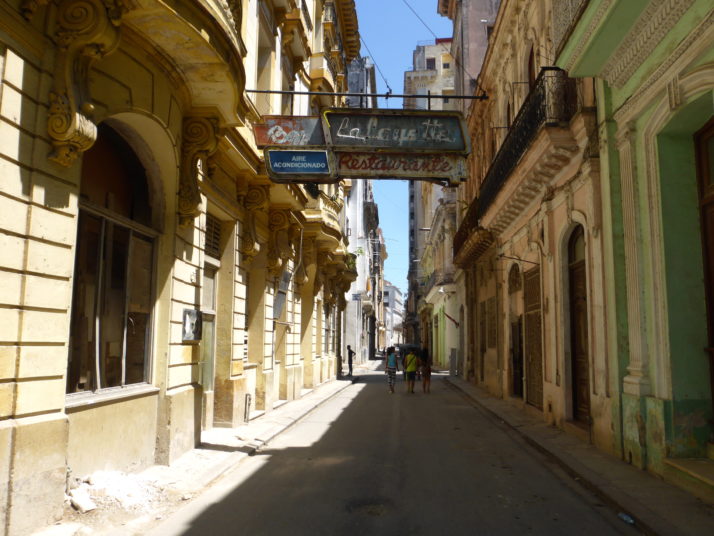
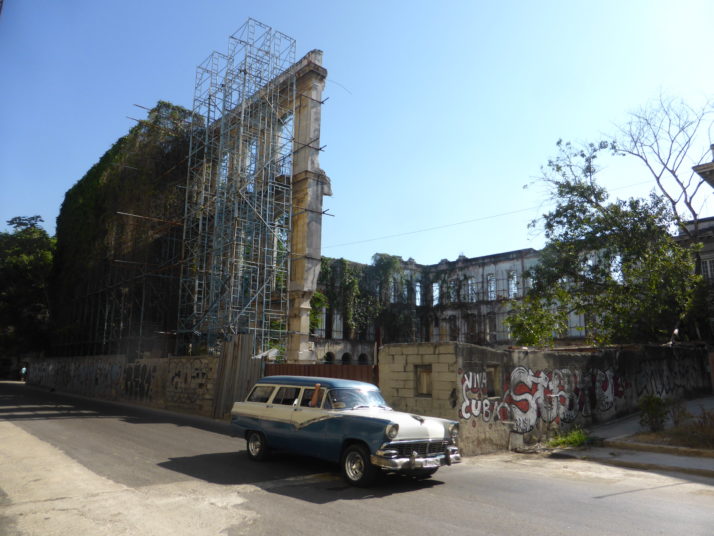
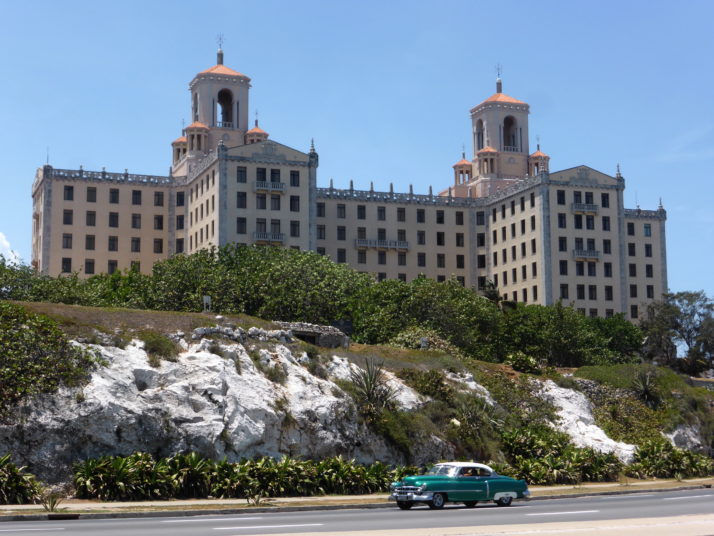

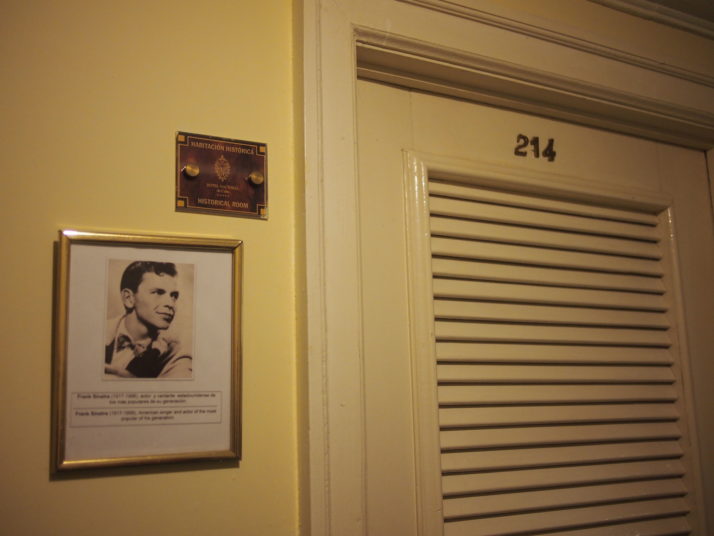

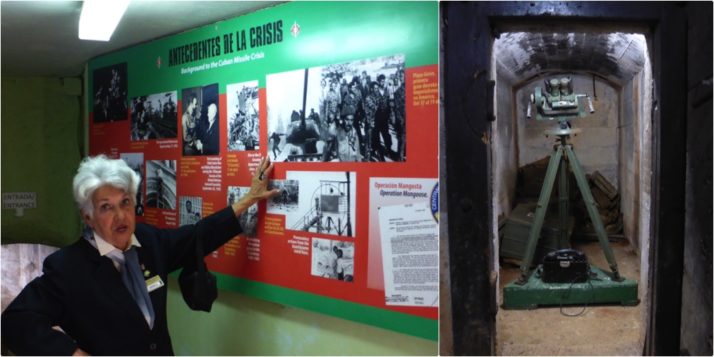
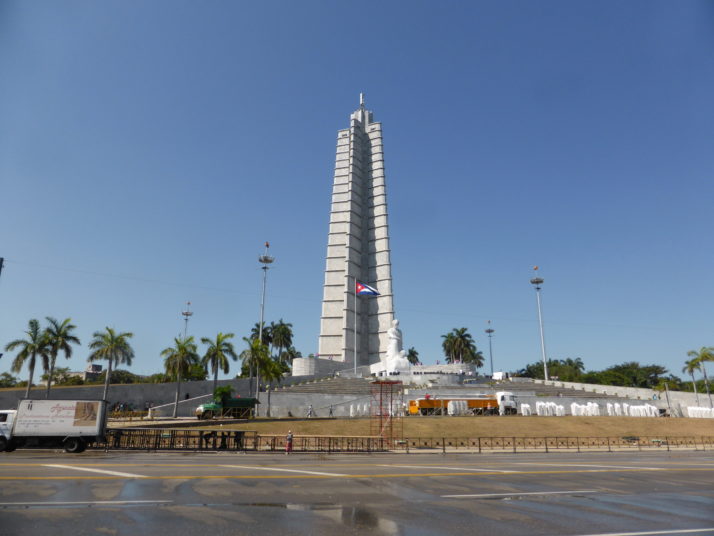
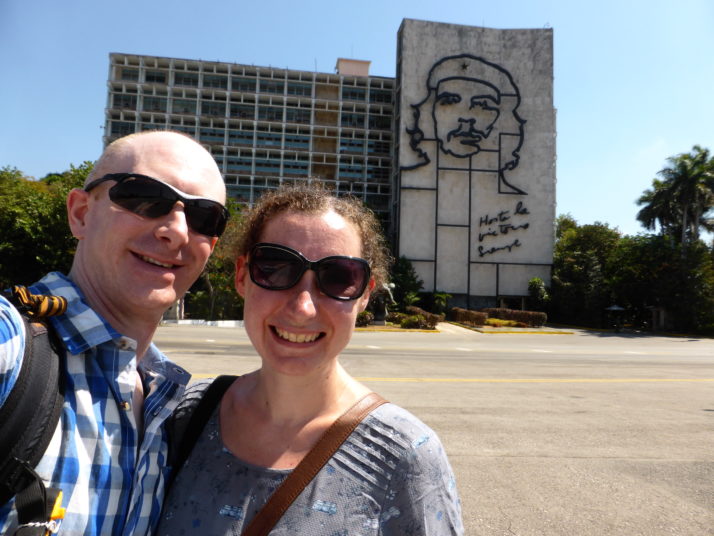
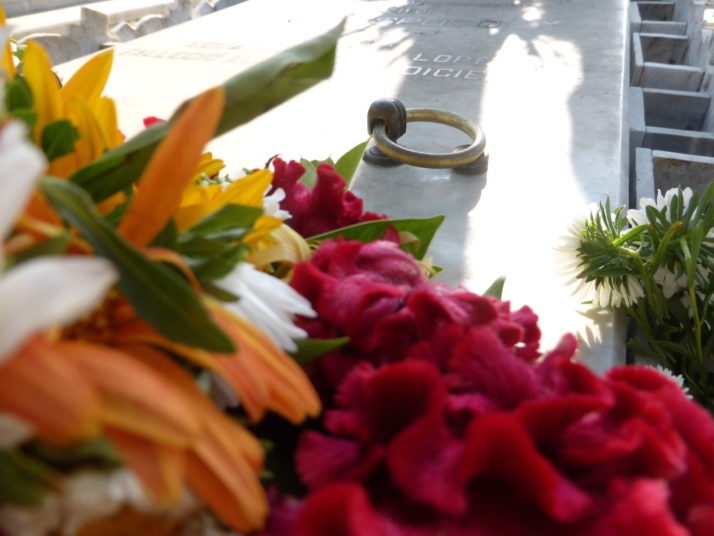
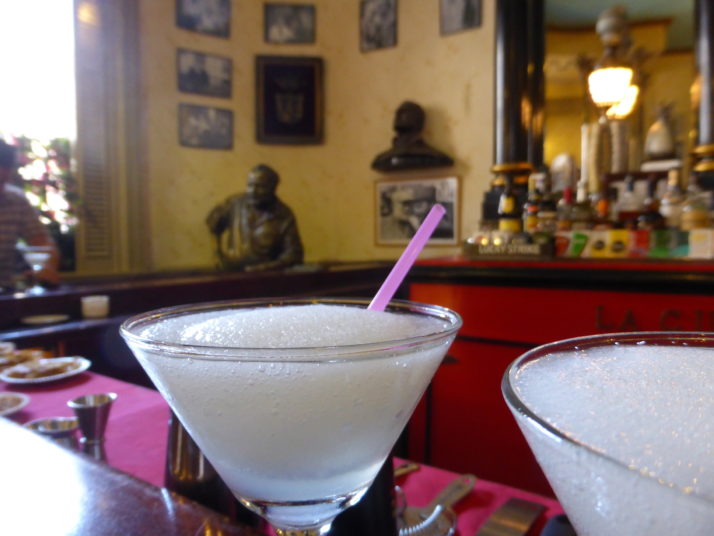
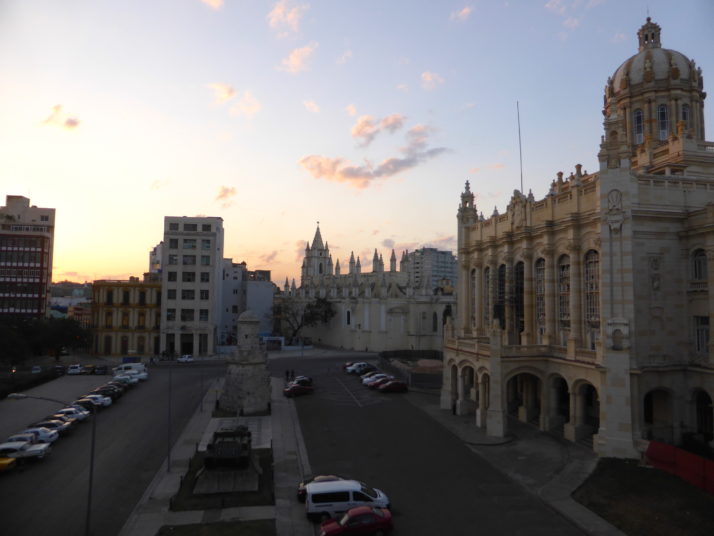
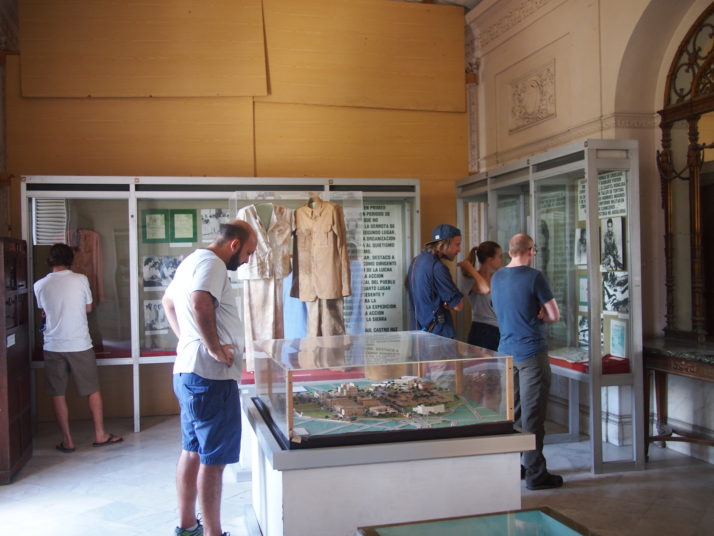
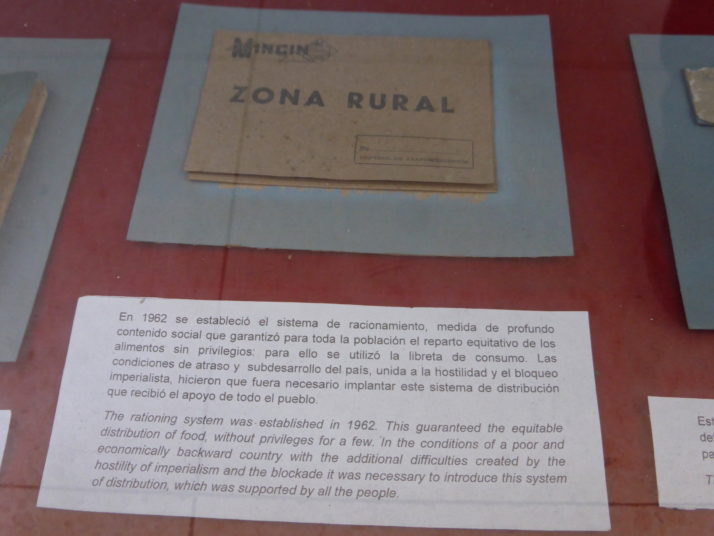
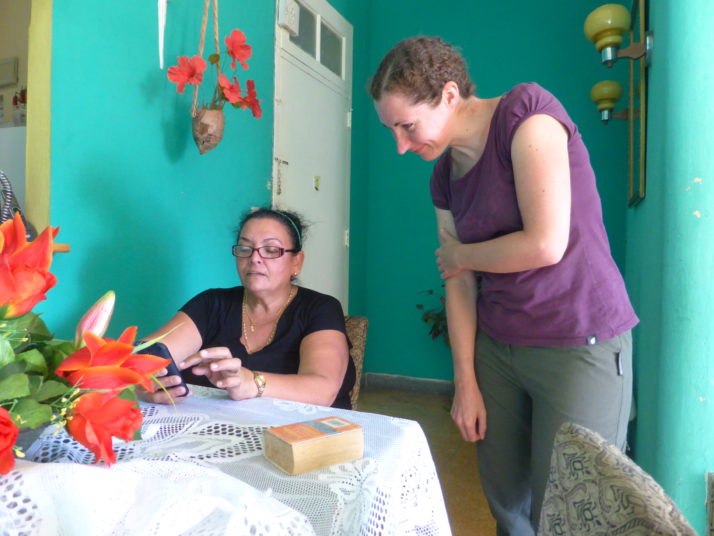
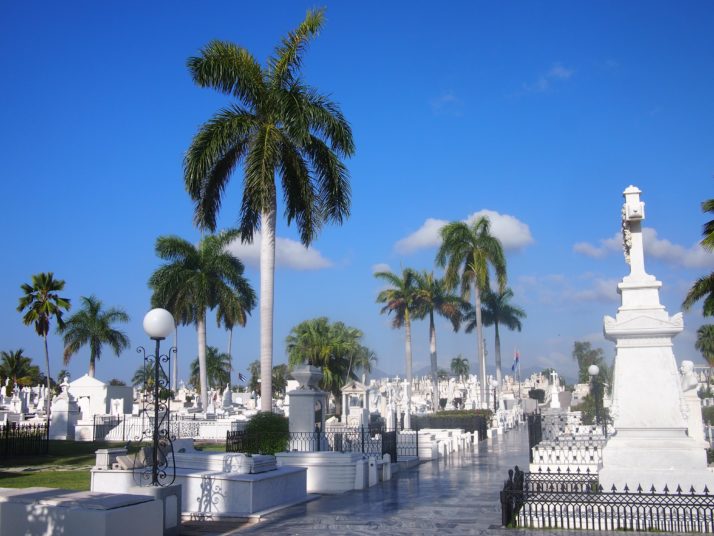 The first cemetery that we visited was Santa Ifigenia in Santiago de Cuba, a sea of white marble and palm trees against the blue Caribbean sky
The first cemetery that we visited was Santa Ifigenia in Santiago de Cuba, a sea of white marble and palm trees against the blue Caribbean sky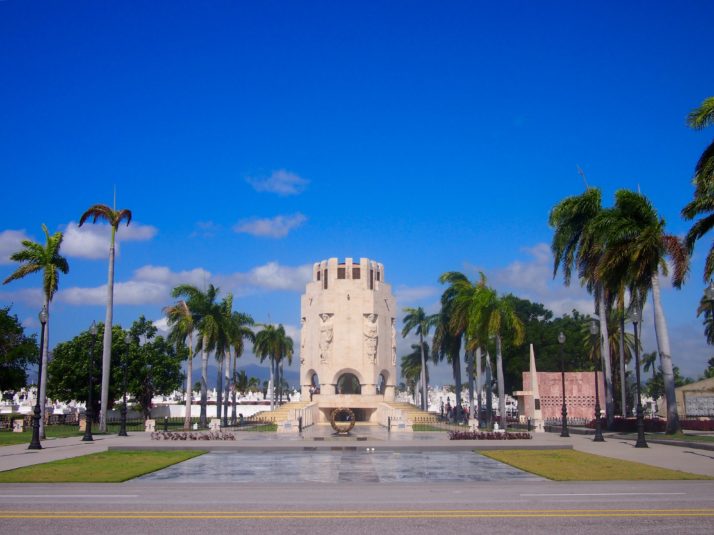 Santa Ifigenia cemetery is the resting place of
Santa Ifigenia cemetery is the resting place of 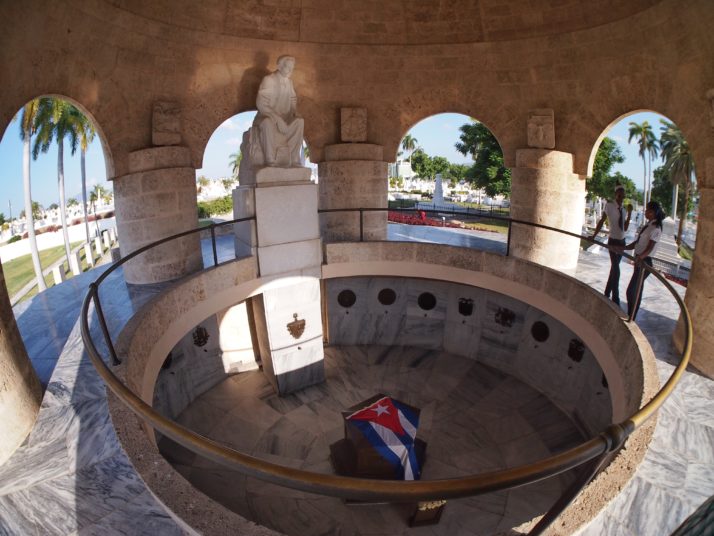 Inside José Martí’s mausoleum, the casket is draped in a Cuban flag and catches daily shafts of sunlight in response to a line in one of his poems about being buried with his visage facing the sun
Inside José Martí’s mausoleum, the casket is draped in a Cuban flag and catches daily shafts of sunlight in response to a line in one of his poems about being buried with his visage facing the sun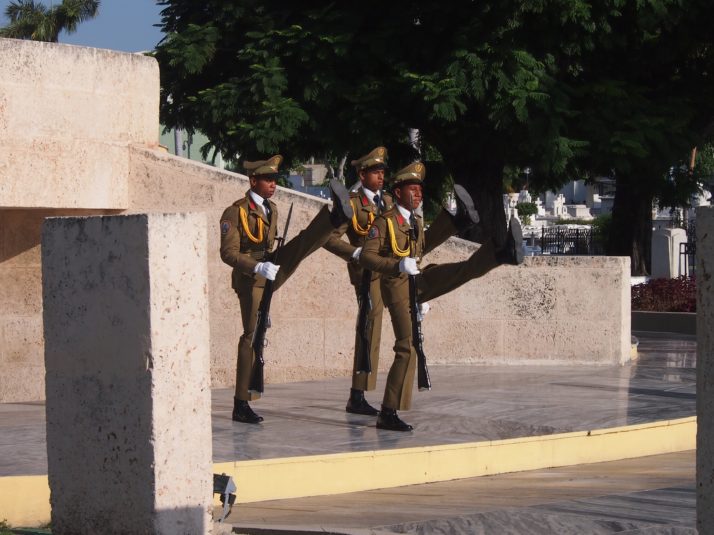 There is a twice hourly changing of the guard ceremony at José Martí’s tomb. At 8.30am we were the only ones there, by 10.30am the audience lining the path was large.
There is a twice hourly changing of the guard ceremony at José Martí’s tomb. At 8.30am we were the only ones there, by 10.30am the audience lining the path was large.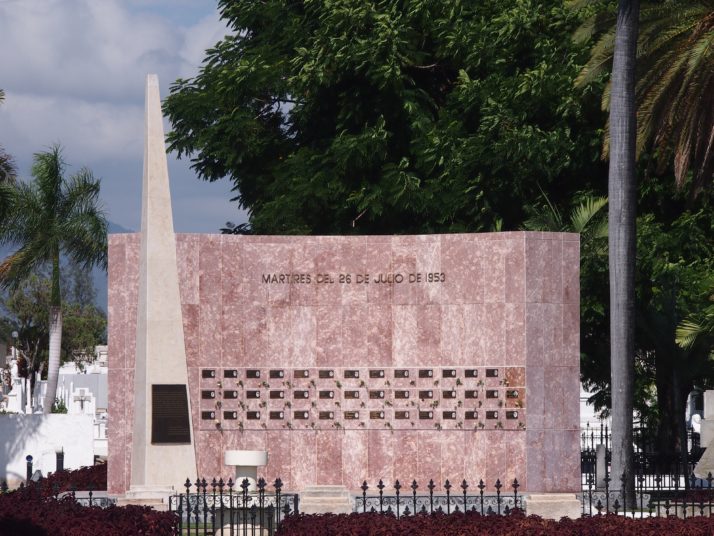 All the cemeteries we visited had mausoleums for soldiers killed during the revolutionary fighting, this one honours those who lost their lives during the Moncada Barracks attacks
All the cemeteries we visited had mausoleums for soldiers killed during the revolutionary fighting, this one honours those who lost their lives during the Moncada Barracks attacks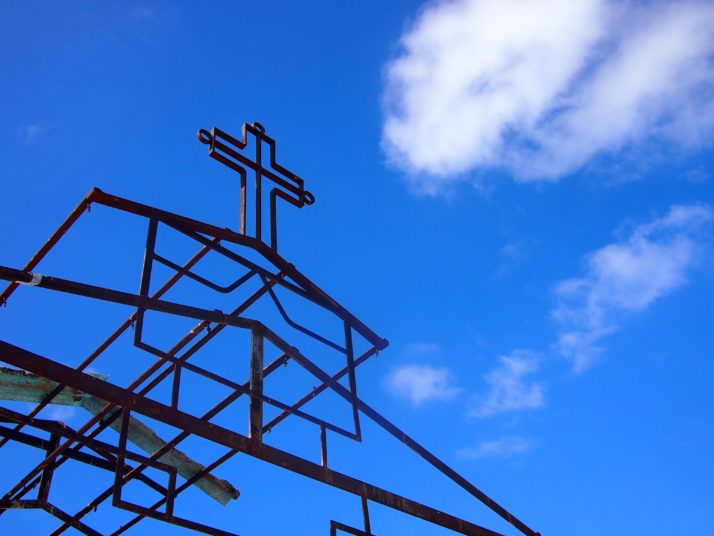 Most of the gravestones at Santa Ifigenia cemetery were white marble but there were a few exceptions like this metal canopy with a cross
Most of the gravestones at Santa Ifigenia cemetery were white marble but there were a few exceptions like this metal canopy with a cross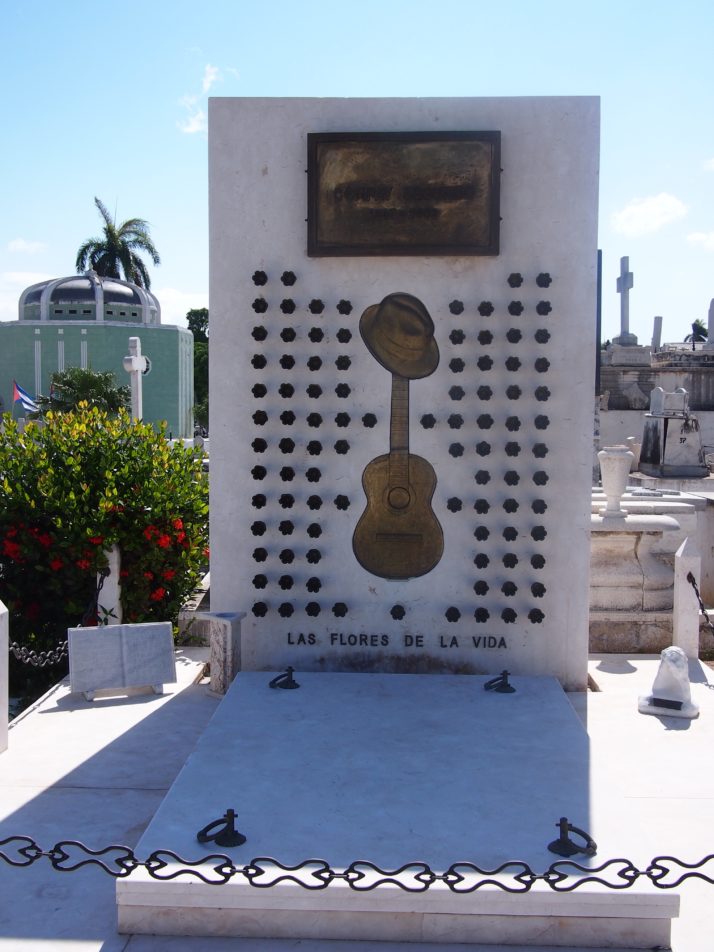
 The cemetery in Baracoa was much less grand than the one in Santiago but it had a beautiful setting overlooking the sea
The cemetery in Baracoa was much less grand than the one in Santiago but it had a beautiful setting overlooking the sea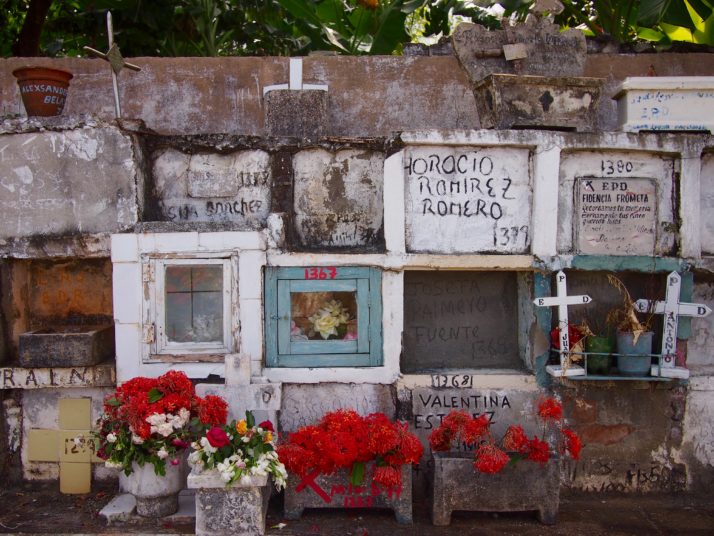 Every cemetery we visited had huge blocks containing square niches, presumably for ashes (there was usually a crematorium building hidden in a back corner as well). Some were simply decorated with the deceased’s name either handpainted or scratched into the wet cement while others had professional plaques, flowers or other decorations
Every cemetery we visited had huge blocks containing square niches, presumably for ashes (there was usually a crematorium building hidden in a back corner as well). Some were simply decorated with the deceased’s name either handpainted or scratched into the wet cement while others had professional plaques, flowers or other decorations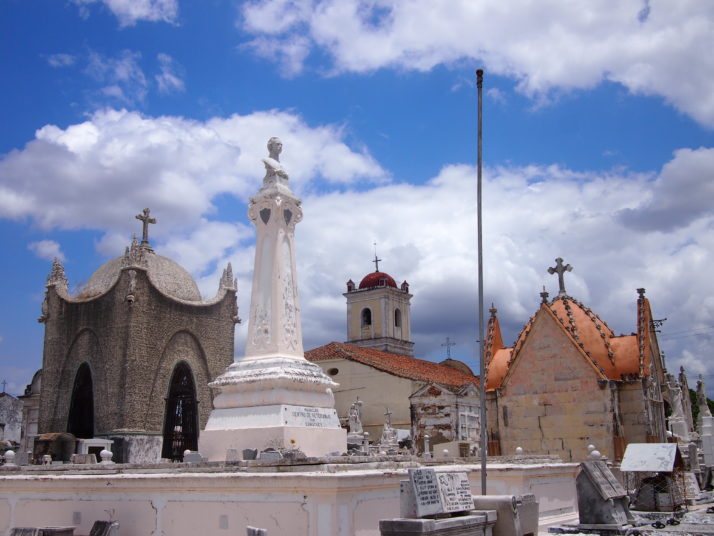 The cemetery in Camagüey was one of my favourites and with barely any other visitors (and no other tourists) we were free to have a good look around. These grand tombs are close to the entrance near the Iglesia de San Cristo de Buen Viaje (Church of St Christopher).
The cemetery in Camagüey was one of my favourites and with barely any other visitors (and no other tourists) we were free to have a good look around. These grand tombs are close to the entrance near the Iglesia de San Cristo de Buen Viaje (Church of St Christopher).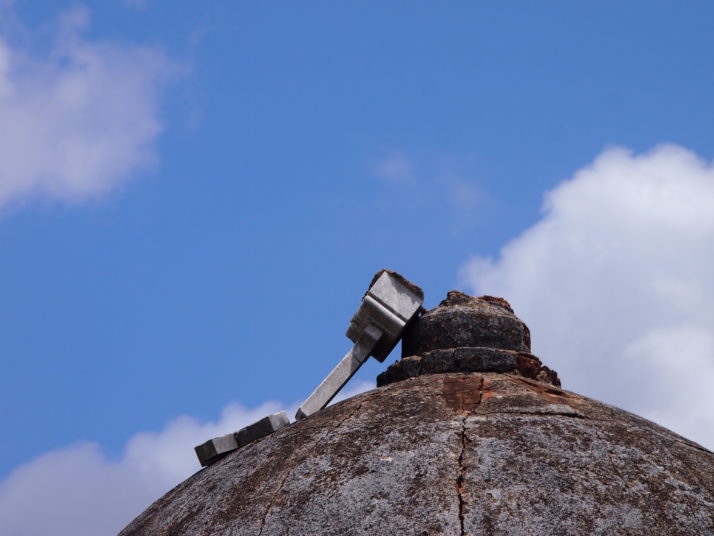 Further into the cemetery more dilapidation was obvious such as this fallen cross
Further into the cemetery more dilapidation was obvious such as this fallen cross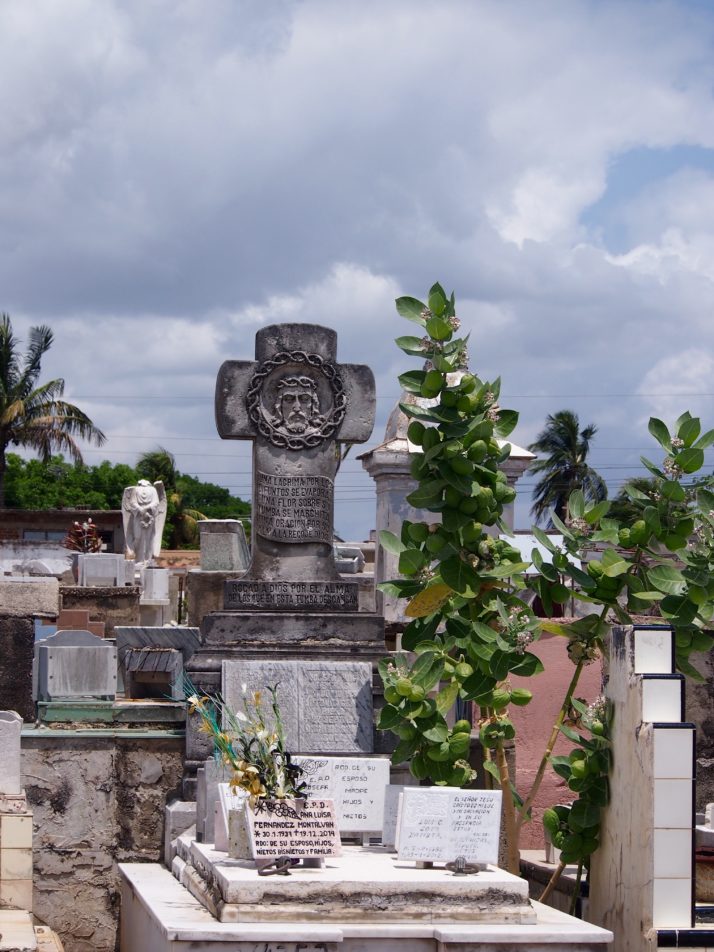 Plots often seemed to contain whole families with a crowd of plaques on top of the grave, each carrying a different name
Plots often seemed to contain whole families with a crowd of plaques on top of the grave, each carrying a different name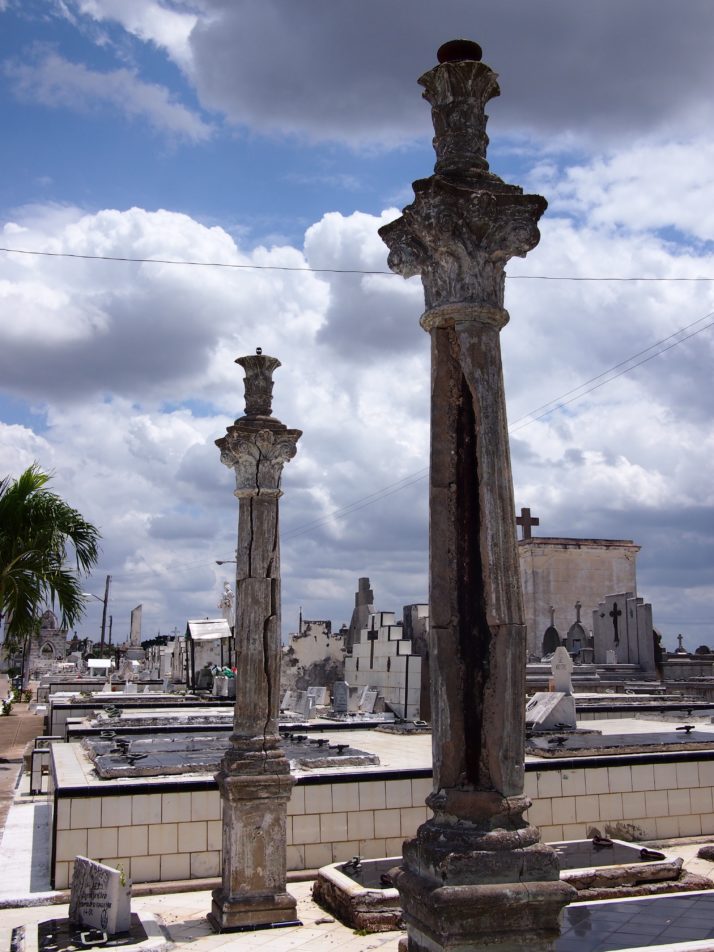 Columns that look as if they’re about to fall apart in Camagüey
Columns that look as if they’re about to fall apart in Camagüey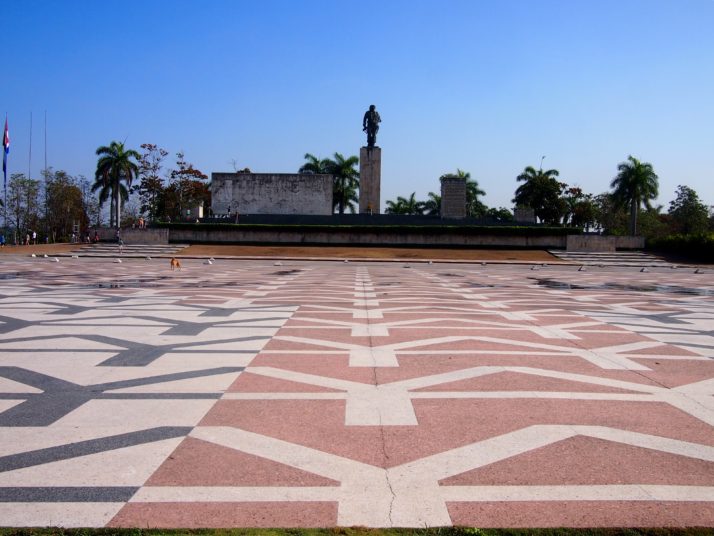 In Santa Clara we didn’t visit the cemetery but the city is home to the most famous mausoleum in the country which contains the remains of Ernesto ‘Che’ Guevara and 16 of the 37 fighters who were killed alongside him in Bolivia. Underneath the statue is a peaceful room of remembrance and an interesting museum documenting Che’s life.
In Santa Clara we didn’t visit the cemetery but the city is home to the most famous mausoleum in the country which contains the remains of Ernesto ‘Che’ Guevara and 16 of the 37 fighters who were killed alongside him in Bolivia. Underneath the statue is a peaceful room of remembrance and an interesting museum documenting Che’s life.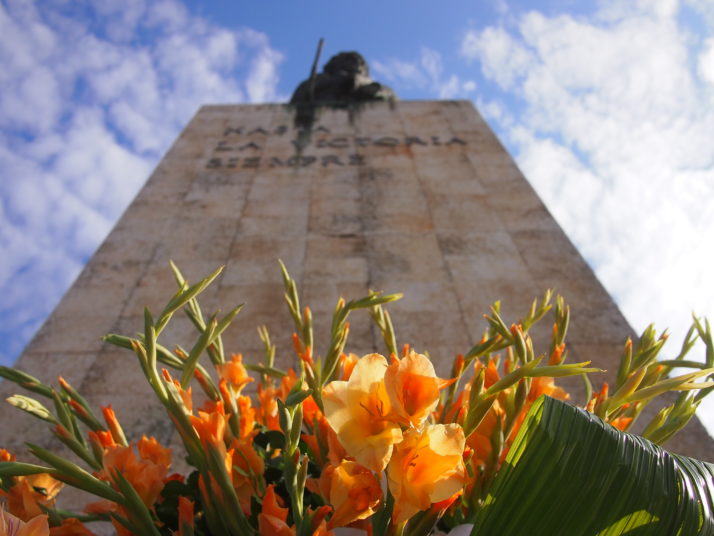 Fresh flowers are placed below the statue of Che each morning.
Fresh flowers are placed below the statue of Che each morning.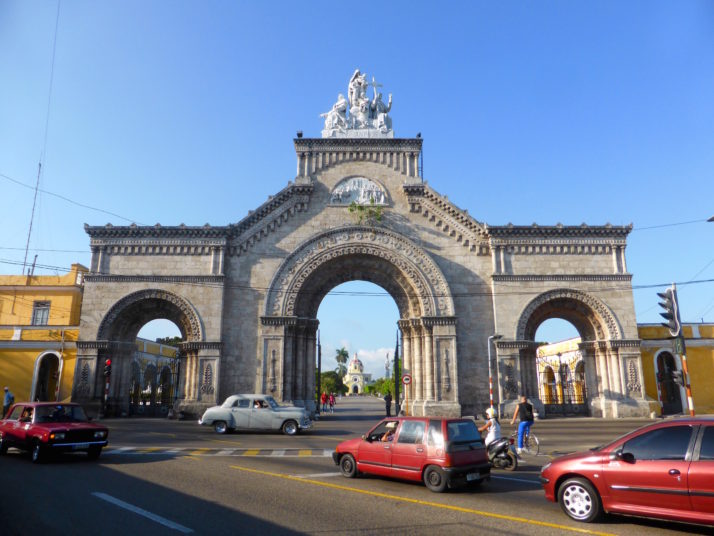 The Necrópolis Cristóbal Colón (Christopher Columbus cemetery) in Havana is enormous and worthy of this imposing entrance gate
The Necrópolis Cristóbal Colón (Christopher Columbus cemetery) in Havana is enormous and worthy of this imposing entrance gate The most famous grave in the cemetery belongs to Amelia Goyri, also known as La Milagrosa or miracle-worker. She died in childbirth in 1901 and was buried with her son. The story goes that when the grave was opened some years late Amelia’s body was uncorrupted and the baby was found not at her feet but in her arms. Since then locals have prayed for her to help with their hopes for children, new houses, etc and now several nearby plots have been overtaken with thank you messages from thoses whose wishes have been fulfilled.
The most famous grave in the cemetery belongs to Amelia Goyri, also known as La Milagrosa or miracle-worker. She died in childbirth in 1901 and was buried with her son. The story goes that when the grave was opened some years late Amelia’s body was uncorrupted and the baby was found not at her feet but in her arms. Since then locals have prayed for her to help with their hopes for children, new houses, etc and now several nearby plots have been overtaken with thank you messages from thoses whose wishes have been fulfilled.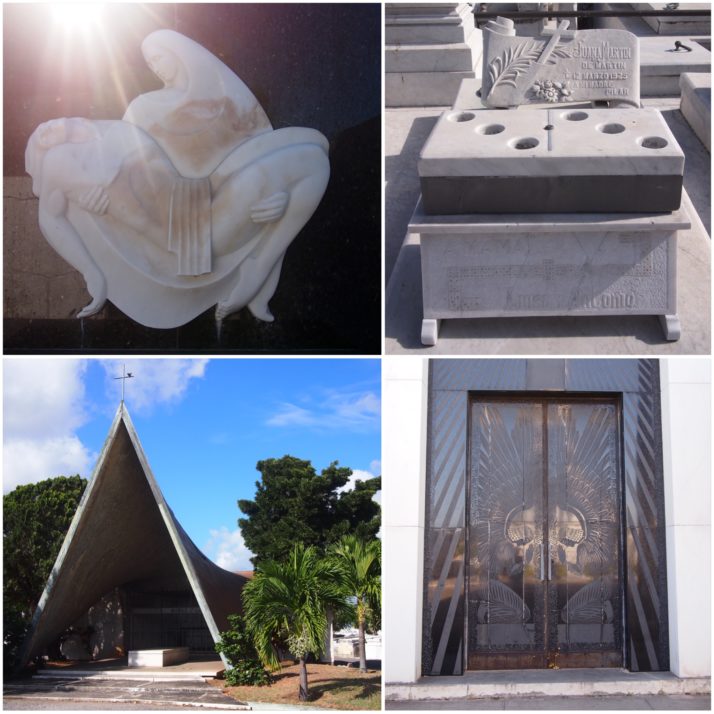 We enjoyed some of the modern graves in the Necrópolis Cristóbal Colón (clockwise from top left): a modern take on the Pietà by sculptor Rita Longa; according to the internet (!), Juana Martin died while playing dominoes; the glass doors on the pantheon of the Baró family were designed by Lalique; tomb of Nuñes Gálvez
We enjoyed some of the modern graves in the Necrópolis Cristóbal Colón (clockwise from top left): a modern take on the Pietà by sculptor Rita Longa; according to the internet (!), Juana Martin died while playing dominoes; the glass doors on the pantheon of the Baró family were designed by Lalique; tomb of Nuñes Gálvez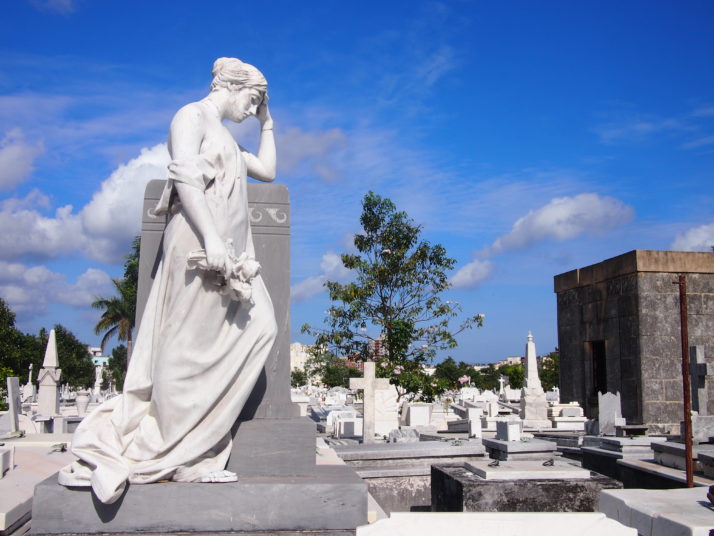 But there is plenty of beautiful white marble as well
But there is plenty of beautiful white marble as well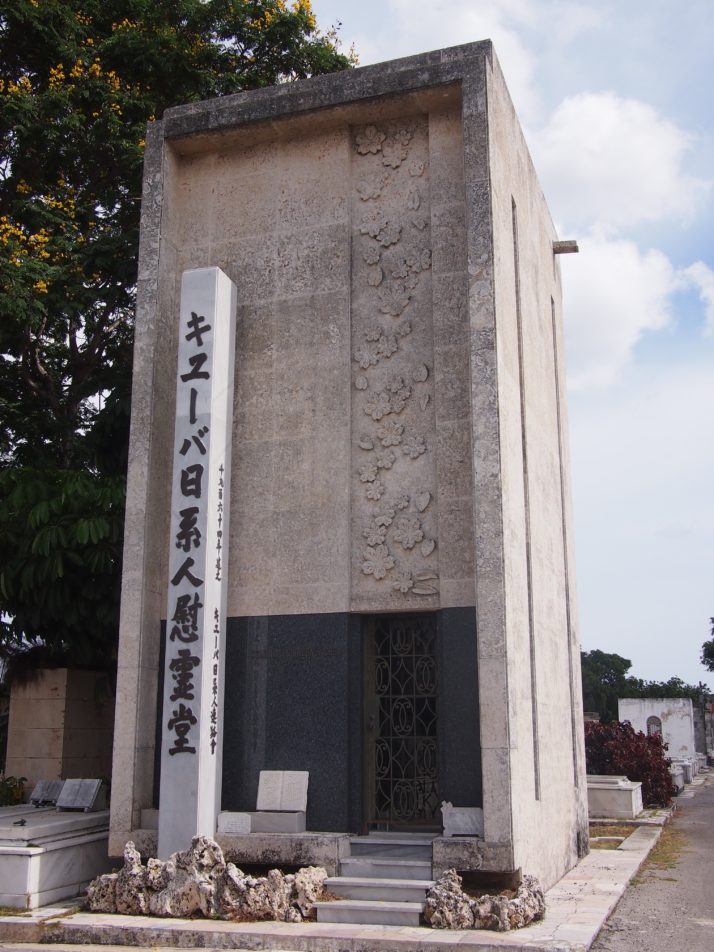 There were a number of mausoleums for societies like this one for the Japanese Colony of Cuba. Inside are walls of square niches.
There were a number of mausoleums for societies like this one for the Japanese Colony of Cuba. Inside are walls of square niches.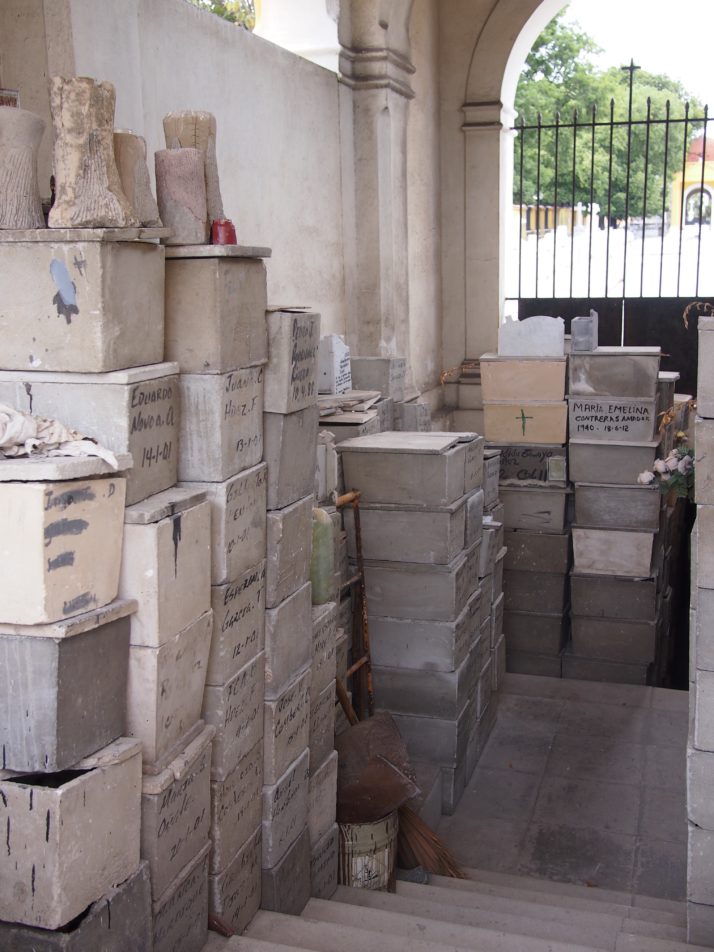 The Tobías Gallery is a 100m long underground gallery. We couldn’t enter but from what we could see from the doorway it looks to be piled high with small boxes like these which presumably contain bones or ashes
The Tobías Gallery is a 100m long underground gallery. We couldn’t enter but from what we could see from the doorway it looks to be piled high with small boxes like these which presumably contain bones or ashes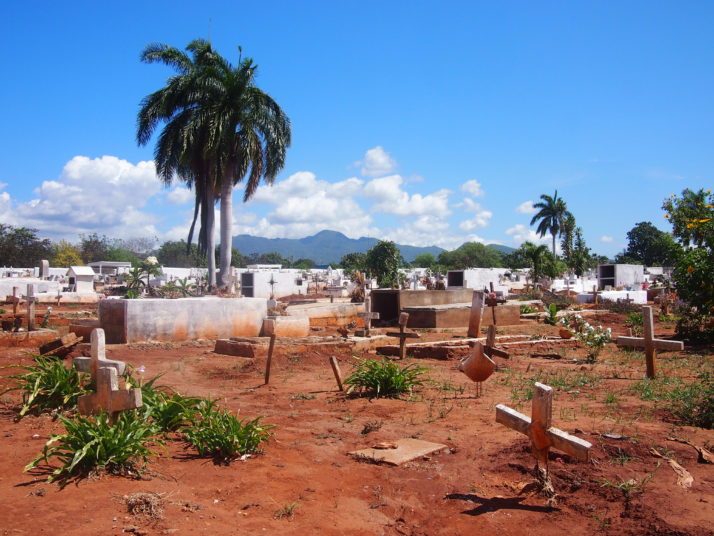 We visited the cemetery in Trinidad mainly to have a destination away from the tourist-filled city centre. We were rewarded with this tropically apocalyptic view.
We visited the cemetery in Trinidad mainly to have a destination away from the tourist-filled city centre. We were rewarded with this tropically apocalyptic view.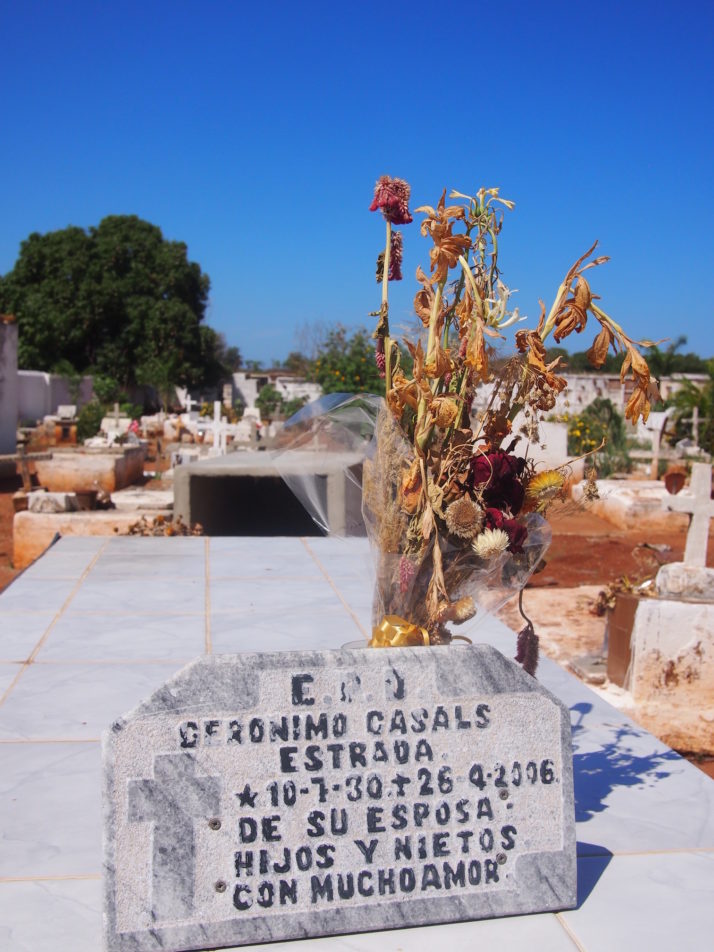 Flowers dry out very quickly in the hot Cuban sun and many graves had fake rather than fresh flowers.
Flowers dry out very quickly in the hot Cuban sun and many graves had fake rather than fresh flowers.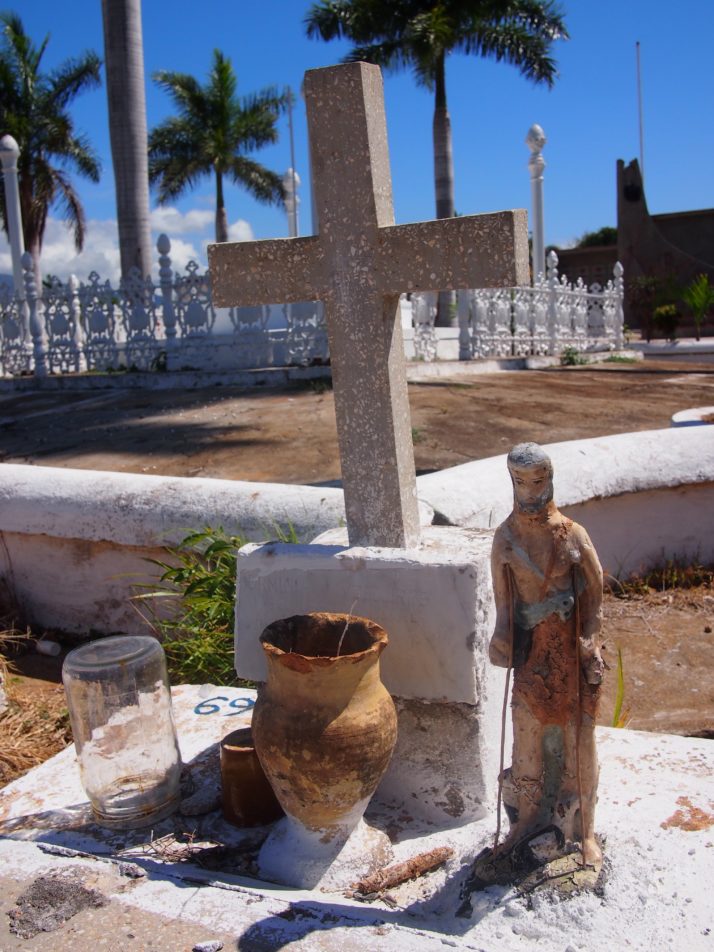 This grave is topped with a statue of Babaluaye, one of the orishas from Santeria, the religion fused from African animisism and Catholicism. It also holds what I think is the remains of a cigar
This grave is topped with a statue of Babaluaye, one of the orishas from Santeria, the religion fused from African animisism and Catholicism. It also holds what I think is the remains of a cigar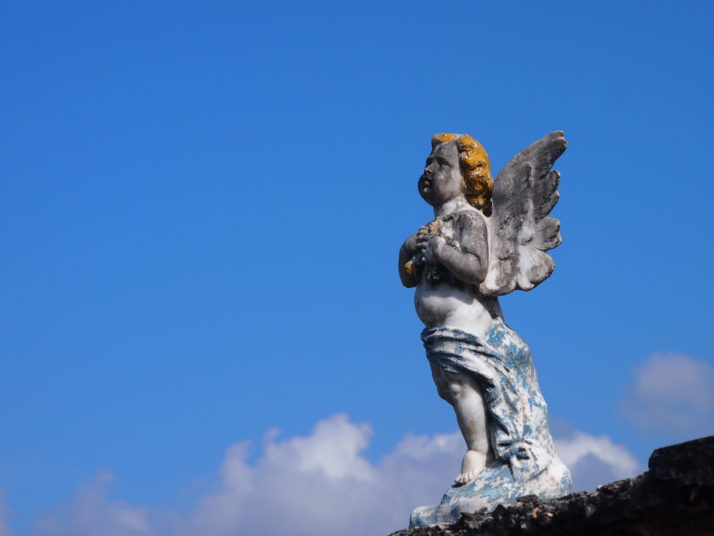 A forlorn and battered cherub tops a tomb in Morón
A forlorn and battered cherub tops a tomb in Morón